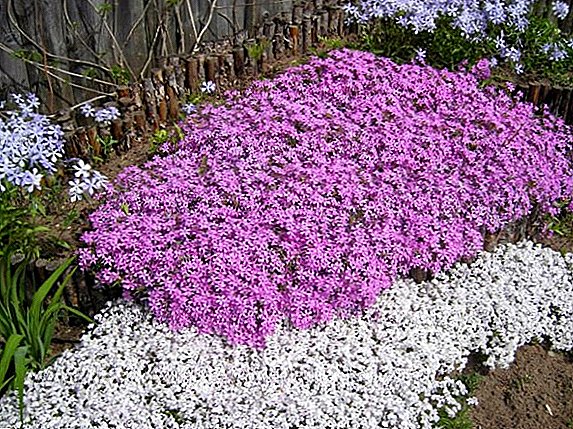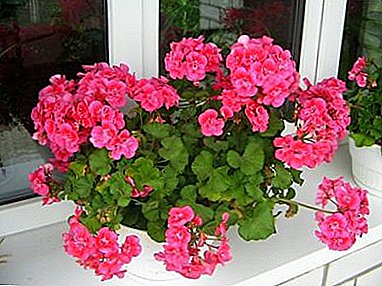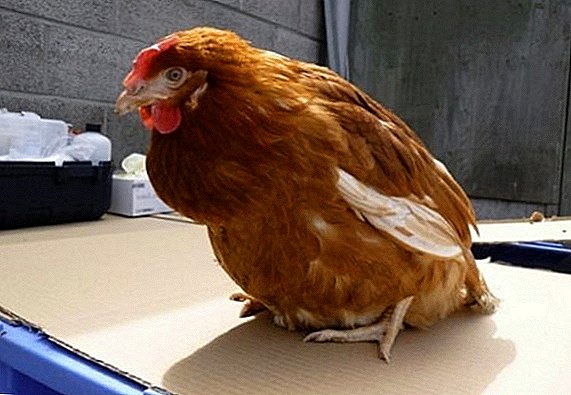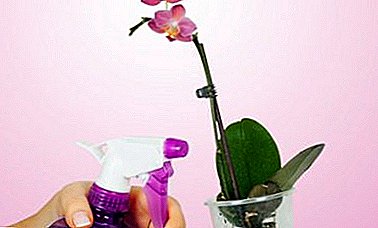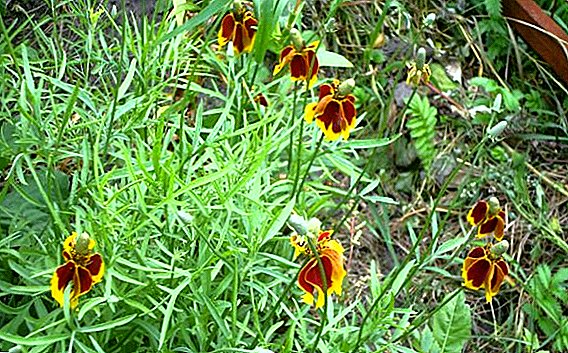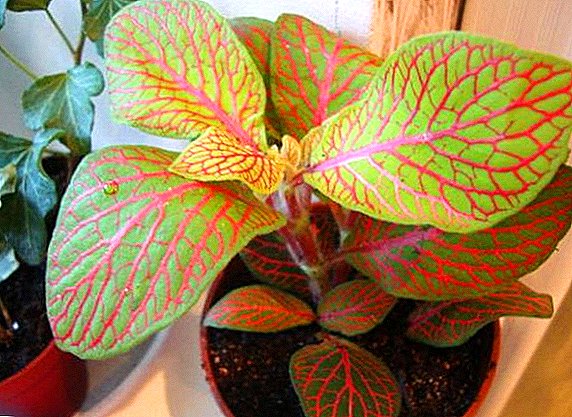 Fittonia (planten) is a houseplant of the Acantov family, beloved by many gardeners. Appreciated for its elegance and attractive appearance. Competent care for fittonia at home will help reveal all the facets of the beauty of the plant and it will perfectly fit into any interior.
Fittonia (planten) is a houseplant of the Acantov family, beloved by many gardeners. Appreciated for its elegance and attractive appearance. Competent care for fittonia at home will help reveal all the facets of the beauty of the plant and it will perfectly fit into any interior.
Did you know? Culture got its name in honor of two English-speaking sisters Fiton (Elizabeth and Sary-Maria), who in the XIX century made the first botanical textbook.
Description of fittonia and its species
Fittonia is a stunted perennial plant with pubescent, creeping branches. The foliage is covered with a grid of yellow, white or violet-red hue, which is a characteristic feature of the culture.
There are several main types of plantten:
- Fittonia Verschaffelt. In Central America, distributed in tropical rain forests. It is strongly curled, has pubescent stems. The leaves are oval-shaped, large, olive or dark green in color, with reddish streaks. It takes root well in moist land;
 fittonia silversilver or silver. Mesh veins on the foliage is painted in white and silver tones. Hybrid "Nana" is the most popular because it can grow with enough dry air. Small foliage.
fittonia silversilver or silver. Mesh veins on the foliage is painted in white and silver tones. Hybrid "Nana" is the most popular because it can grow with enough dry air. Small foliage.- fitonniya giant or large. It can reach up to 60 cm in height. It is an erect or slightly inclined plant, covered with bright green oval-shaped leaves. In the care of quite demanding. Comes from Peru.
- phytonia "botanic mix" is often called a mixture of different types of flower planted in one container. That it is best suited for growing in urban areas.
- Fittonia Skeleton when taking care of home requires heat and high humidity. It is characterized by an intense color of velvety, soft foliage - bright red streaks contrasted with olive shade of leaf plates.
Is it possible to grow fittonia at home?
 For those who want to start planting a mix of plants, care at home can seem quite troublesome, because for the normal development of the plant requires high humidity. However, breeders brought a lot of varieties, it is suitable for dry air of city apartments.
For those who want to start planting a mix of plants, care at home can seem quite troublesome, because for the normal development of the plant requires high humidity. However, breeders brought a lot of varieties, it is suitable for dry air of city apartments.
Potted flowers of Fittonia are used not only in a single planting, but also in various florariums, mini-gardens, complex compositions in glass containers, for floristic window dressing.
Did you know? Dieffenbachia is considered the best neighbor for a flower when it is planted together.
What you need to grow fittonia at home
When breeding fittonia, caring for her at home, above all, provides for the creation of optimal conditions: suitable lighting, humidity and air temperature.
Humidity, temperature and lighting
Plantin mix - a flower that prefers high humidity. It should be abundantly spray 2 times a day. You can also put next to the plant any vessel with water so that the liquid evaporates.
Important! Do not put Fittonia near a hot battery or other heating devices.A bright but diffused light will do for a fittonia flower. You should also protect the plant from direct sunlight and, if necessary, in time shade it. In summer, the culture will feel best on the east or west window, and in the cold time - on the south. When placed on the north side, the stems are drawn out and the planten mix looks unattractive.
 The optimal temperature for fittonia (in the warm season) is a value of + 22 ° C ... + 25 ° C, and in winter it should not fall below + 18 ° C.
The optimal temperature for fittonia (in the warm season) is a value of + 22 ° C ... + 25 ° C, and in winter it should not fall below + 18 ° C.Important! The flower may die from sudden fluctuations in temperature, so it cannot be left in the draft and taken out to the open air.
What should be the soil for growing
The soil for fittonii should be nutritious and loose. You can independently prepare the mixture by mixing in equal parts the sand with deciduous, peaty and coniferous soils. It is also possible to buy a ready-made substrate, developed by the manufacturer specifically for the planten mix. At the bottom of the pot should definitely pour drainage, for example, expanded clay.
Features care for fittonia at home
Before you start and start caring for fittonia, you need to familiarize yourself with the rules of feeding and watering the plant.
How to water fittonia
The flower requires abundant watering from spring to autumn, using soft and warm water. In addition, it must be settled. With the onset of cold weather, the plant is transferred to moderate watering.
Important! Even in the case of a single drying of the roots, the leaves can be thrown out, and a strong overflow of culture is fraught with the rotting of its underground part.
Fittonia fertilizer
 Plantin mix should be fed with complex mineral fertilizers twice a month, starting from the beginning of spring until late autumn. However, since the plant does not tolerate an excess of mineral substances, the dosage specified by the manufacturer is halved. In winter, fittonia does not require fertilization.
Plantin mix should be fed with complex mineral fertilizers twice a month, starting from the beginning of spring until late autumn. However, since the plant does not tolerate an excess of mineral substances, the dosage specified by the manufacturer is halved. In winter, fittonia does not require fertilization.
Features of a flower transplant
Fittonii need a transplant once a year, and carry out the procedure in early spring. Wide, small containers are chosen for transplanting, since the planten mix has a superficial root system.
Fittonia needs to be trimmed once every few years. The shoots obtained after this (cuttings) can be rooted.
Reproduction of fittonia at home
Many gardeners are interested in how to multiply fittonia at home. It should be noted that do it under the power of each.
Experts identify the following methods of breeding fittons:
- seeds;
- layering;
- division of the bush;
- cuttings;
 Best of all fittoniya gives in to reproduction by shanks. To this end, a strong shoot about 8 cm long with 3-5 leaves is cut from the top of the flower. The branch is placed in the sand and cover all with a film or an ordinary glass jar. The air temperature where the structure is located should not be below + 26 ... +28 ° С.
Best of all fittoniya gives in to reproduction by shanks. To this end, a strong shoot about 8 cm long with 3-5 leaves is cut from the top of the flower. The branch is placed in the sand and cover all with a film or an ordinary glass jar. The air temperature where the structure is located should not be below + 26 ... +28 ° С.Several times a week, the shelter is taken, the stalk is aired and sprayed. After 30-45 days (depending on the growth rate of the roots), fittonia can be placed in a separate pot.
Important! A branch can take root and just in a jar of water, if it is also covered with a package. This is one of the easiest ways to answer the question "How to multiply fittonia?".Reproduction by dividing the plant occurs during transplantation. Parts of the shrub gently divided so as not to damage the root system. Each of them is planted in a separate container.
Propagating the flower by layering, you should prikopat one of the branches in the ground, without sheets. Soon it will take root and it can be deposited. When breeding fittonia, reproduction from the leaf is not practiced, as it rarely takes root.
Major diseases and pests of fittonia
Fitonia mix is rarely sick, and most diseases are associated with errors in the care of the plant. Therefore, if:
- The leaves are wrinkled - this indicates an excess of light and too dry air.
- Yellowing plants - indicates too abundant and frequent watering.
- The stems became bare - the plant is aging, rejuvenating pruning and transplanting are needed.
 The tips of the leaves are dry - you need to increase the humidity.
The tips of the leaves are dry - you need to increase the humidity.- Stems faded - the answer to the question “Why does fittonia fade?” Is too cold water.
- Falling flower leaves - too much water is brought in, you need to reduce watering.
- Foliage discoloration is the result of too bright light.
The first sucks the juice from the flower, from which it quickly withers and eventually dies. Brownish plaques on foliage signal a lesion with a shield. At the first signs of the presence of a pest, the leaves should be treated with a weak solution of laundry soap or Actellic.
The same means are used when infecting mealybugs (lumps similar to cotton wool appear on the leaves) and thrips (they are characterized by the appearance of yellow spots, which increase with time).
About the presence of spider mite says a thin spider web on the back of the leaves. The most effective means in the fight against pest were insecticides "Derris" and "Fitoverm." Use them in doses indicated by the manufacturer of the drug.
Having provided fittonia with proper care, the florist can be sure that the plant will delight him with an excellent view and become a real decoration of the house.


 fittonia silversilver or silver. Mesh veins on the foliage is painted in white and silver tones. Hybrid "Nana" is the most popular because it can grow with enough dry air. Small foliage.
fittonia silversilver or silver. Mesh veins on the foliage is painted in white and silver tones. Hybrid "Nana" is the most popular because it can grow with enough dry air. Small foliage. The tips of the leaves are dry - you need to increase the humidity.
The tips of the leaves are dry - you need to increase the humidity.